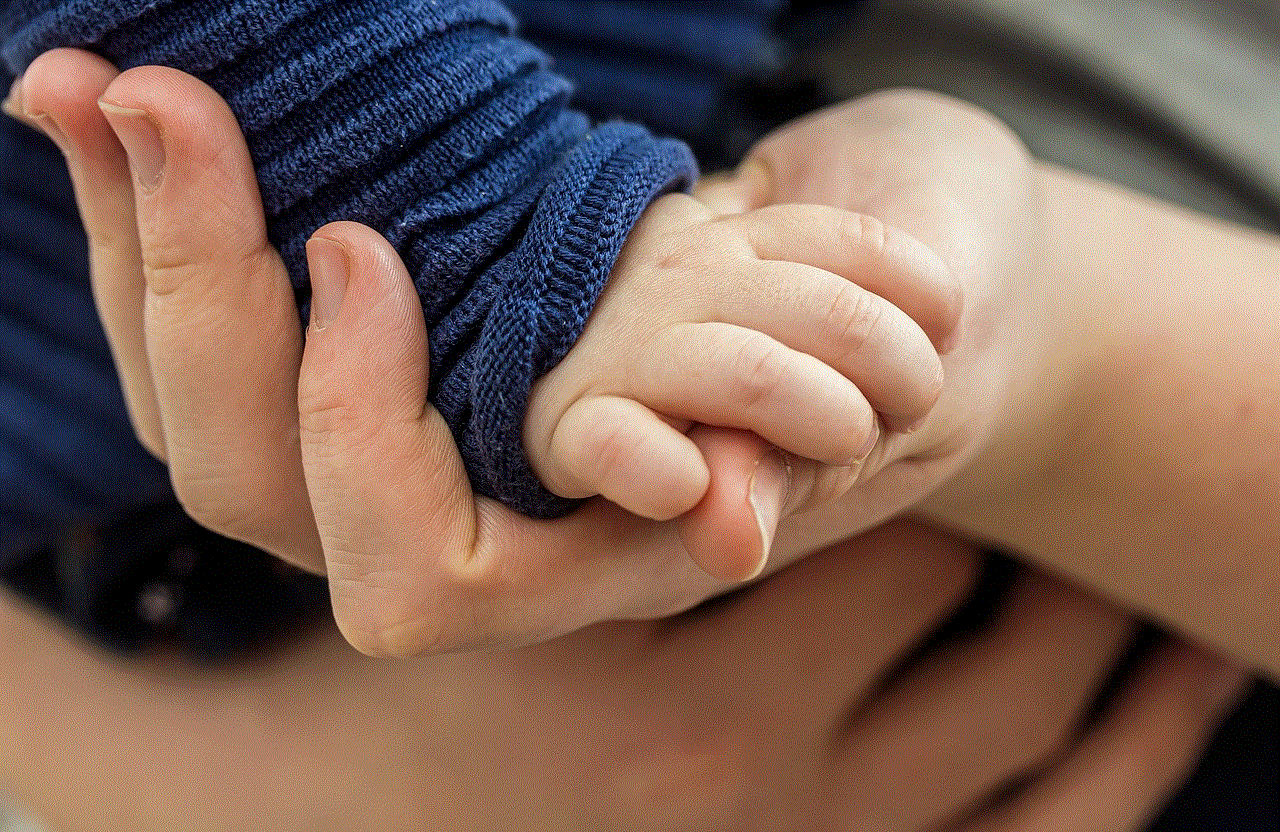how to see your husband’s text messages
In today’s digital age, it is not uncommon for people to communicate primarily through text messages. This includes married couples, who often rely on text messages as a means of staying connected throughout the day. However, there may come a time when you feel the need to see your husband’s text messages. Perhaps you suspect that he may be hiding something, or you simply want to ensure that your relationship is built on trust and transparency. Whatever the reason may be, the thought of invading your husband’s privacy can be daunting. But fear not, as there are ways to see your husband’s text messages without compromising his trust or violating any laws. In this article, we will discuss the different methods you can use to view your husband’s text messages and the legal and ethical considerations you must keep in mind.
Before we delve into the methods, it is important to understand the legal implications of accessing someone else’s text messages. In most countries, including the United States, it is illegal to access someone’s electronic communications without their consent. This includes text messages, emails, and social media messages. Violating these laws can result in severe consequences, including hefty fines and even imprisonment. Additionally, even if you are legally permitted to access your husband’s text messages, it is important to consider the ethical implications of doing so. Trust is the foundation of any healthy relationship, and snooping through your partner’s messages without a valid reason can damage the trust and intimacy in your marriage. Therefore, it is crucial to have an open and honest conversation with your husband before attempting to see his text messages.
Now, let’s discuss the different methods you can use to see your husband’s text messages. The most straightforward way is to ask him directly. If you have a valid reason for wanting to see his messages, such as concerns about infidelity or dishonesty, it is best to communicate your concerns openly and honestly. A healthy and trusting relationship is built on open communication, and your husband may be willing to show you his messages voluntarily. However, if he refuses to do so, there are other methods you can use.
One way to see your husband’s text messages is through his phone. This method requires physical access to his device, and it may not be feasible if your husband is always with his phone or keeps it locked. If you are able to access his phone, you can go through his messages when he is not around. However, keep in mind that this method may be considered a violation of his privacy, and it should only be used as a last resort.
Another option is to use a spy app or software. These apps are designed to monitor someone’s phone activity, including text messages, call logs, social media activity, and more. They work in the background, and your husband will not be able to detect them. However, it is crucial to note that using spy apps may be illegal, depending on your location. Furthermore, installing these apps without your husband’s knowledge may be considered a breach of trust and can have severe consequences on your marriage. Therefore, it is important to have a valid reason for using these apps and to consult a legal professional before doing so.
If you are tech-savvy and your husband uses an iPhone, you can view his text messages by accessing his iCloud account. This method requires knowing his Apple ID and password, and it allows you to see all the messages on his phone, including deleted ones. However, this method only works if your husband has enabled iCloud backup for his messages. Additionally, it is important to note that accessing someone’s iCloud account without their consent is considered a violation of their privacy and may have legal consequences.
If you do not have access to your husband’s phone or his iCloud account, you can try using a SIM card reader. These devices can extract data from a SIM card, including text messages, call logs, and contacts. However, this method only works if your husband’s phone uses a SIM card and if the messages have not been deleted.
Lastly, you can hire a professional investigator to help you see your husband’s text messages. These professionals have the necessary tools and expertise to retrieve deleted messages and monitor your husband’s phone activity. However, this option may be costly, and it is important to ensure that the investigator follows all legal and ethical guidelines.
In conclusion, there are various methods you can use to see your husband’s text messages. However, it is important to remember that accessing someone’s private communications without their consent is illegal in most countries and can have severe consequences. Therefore, it is crucial to have a valid reason for wanting to see your husband’s messages and to communicate openly and honestly with him about your concerns. Trust and mutual respect are the foundations of a healthy marriage, and it is important to maintain these values while trying to access someone else’s private information.
emoji meanings for drugs
In recent years, emojis have become a universal language for communication, especially among the younger generation. These small, colorful symbols can convey a wide range of emotions, actions, and objects, including drugs. While drugs have been a prevalent issue in society for decades, the use of emojis has made it easier for people to discuss and reference them without explicitly using their names. In this article, we will explore the meanings of various emojis related to drugs and their significance in today’s culture.
Before we dive into the specific meanings of emojis related to drugs, it is essential to understand the history and impact of these substances on society. Drugs, both legal and illegal, have been a part of human culture for centuries. They have been used for medicinal, spiritual, and recreational purposes. However, with the rise of industrialization and globalization, the production and distribution of drugs have become more widespread, leading to addiction, abuse, and other social issues.
In the context of emojis, the most commonly used symbols for drugs are the syringe 💉, pill 💊, and leaf 🍃. These emojis can represent a wide range of substances, from prescription medications to illegal drugs. Let’s take a closer look at the meanings and implications of these emojis.
The syringe 💉 emoji is often associated with drugs, particularly injectable substances such as heroin, cocaine, and methamphetamine. It can also represent the act of injecting oneself with medication or substances. This emoji has a negative connotation due to its association with drug use and addiction. However, it can also be used to refer to medical procedures such as vaccinations and blood tests.
Similarly, the pill 💊 emoji can represent both prescription and illegal drugs. It is commonly used to refer to medications such as painkillers, antidepressants, and sedatives. However, it can also symbolize the abuse of these substances. The pill emoji is often used in conjunction with other emojis, such as the syringe or the leaf, to convey the use of a particular drug.
The leaf 🍃 emoji is associated with natural substances, particularly marijuana or cannabis. It has become a prevalent symbol for the use of this drug, especially in countries where it is legal. The leaf emoji can also represent other plants or herbs that have medicinal or psychoactive properties. However, it is essential to note that the use of this symbol does not necessarily promote or condone drug use. It can also be used to refer to gardening, nature, or environmentalism.



Apart from these three commonly used emojis, there are several others that have drug-related meanings. The mushroom 🍄 emoji, for instance, can represent psychedelic mushrooms, which have hallucinogenic effects when consumed. The snail 🐌 emoji is used to represent the slow and sedative effects of certain drugs, such as benzodiazepines. The lollipop 🍭 emoji is often used to symbolize the use of ecstasy or MDMA, which is commonly consumed in the form of a pill or tablet.
Another interesting use of emojis related to drugs is the combination of multiple symbols to represent a specific substance or experience. For example, the combination of the syringe 💉 and the leaf 🍃 emoji can represent the use of a marijuana joint laced with other drugs. Similarly, the combination of the pill 💊, syringe 💉, and snake 🐍 emoji can represent the use of a drug cocktail, which can be highly dangerous and addictive.
Furthermore, emojis have also been used to represent the effects of drugs on the mind and body. The brain 🧠 emoji can symbolize the effects of psychoactive substances on the brain, such as altered perceptions, thoughts, and emotions. The dizzy face 🥴 emoji can represent the disorienting and intoxicating effects of alcohol or drugs. The ghost 👻 emoji has been used to symbolize the feeling of being “high” or disconnected from reality.
The use of emojis related to drugs is not limited to text messaging or social media platforms. They have also made their way into popular culture, including music, movies, and fashion. For instance, the music video for the song “Lucid Dreams” by Juice WRLD features several drug-related emojis, including the syringe 💉 and pill 💊, to represent the artist’s struggles with drug addiction. Similarly, fashion brands have also incorporated drug-related emojis into their designs, creating controversy and sparking debates about the glamorization of drug use.
While the use of emojis related to drugs may seem harmless, it is essential to acknowledge the potential negative impact they can have. Emojis can normalize and even glamorize drug use, especially among young and impressionable individuals. They can also desensitize people to the dangers and consequences of drug addiction. Therefore, it is crucial to educate ourselves and others about the meanings and implications of these emojis and to use them responsibly.
In conclusion, emojis have become a powerful tool for communication, and their meanings and uses are constantly evolving. When it comes to drugs, emojis can represent a wide range of substances, effects, and experiences. While some may use them to glorify or promote drug use, it is essential to remember the serious and harmful effects of addiction. As we continue to navigate the digital world, it is crucial to use emojis responsibly and to promote a healthier and more informed conversation about drugs and their impact on society.
whatsapp keeps asking me to verify
WhatsApp is a popular messaging app that allows users to send text messages, make voice and video calls, and share media with others. With over 2 billion users worldwide, it has become an essential tool for communication in both personal and professional settings. However, many users have reported encountering a recurring issue where WhatsApp keeps asking them to verify their account, causing frustration and inconvenience. In this article, we will delve deeper into why this issue occurs, its potential causes, and how to resolve it.
To begin with, let us understand what the verification process in WhatsApp entails. When you first sign up for WhatsApp, you are required to provide your phone number for verification purposes. This process involves receiving a verification code through SMS or a phone call, which you need to enter into the app to confirm your identity. Once verified, you can use WhatsApp for messaging and other functionalities. However, some users have reported that they are constantly prompted to verify their account, despite having completed the process before.



One possible cause for this issue could be a problem with the network or internet connection. When the connection is unstable, it can cause the app to lose the verification code, leading to repeated prompts for verification. In such cases, it is advisable to ensure that your device has a stable internet connection before attempting to verify your account again.
Another cause could be an outdated version of WhatsApp. Like any other app, WhatsApp regularly releases updates to improve its functionalities and fix bugs. If you are using an older version of the app, it could lead to issues with verification, as the app may not be able to communicate with the server properly. Therefore, it is crucial to keep your WhatsApp updated to the latest version available.
Furthermore, if you have recently changed your phone number or device, you may encounter this issue. When you register for WhatsApp with a new number, the app will prompt you to verify your account. However, if you have switched to a new device, the app may not recognize your old account and require you to verify it again. In such cases, make sure to enter the same phone number that you used to register for WhatsApp initially.
Moreover, another potential cause could be a problem with the SIM card. In some cases, the SIM card may not be registered correctly with the network, causing issues with the verification process. To resolve this, you can try removing and reinserting the SIM card or contact your service provider to ensure that the SIM card is activated and working correctly.
Additionally, if you have changed your phone or device frequently or have multiple devices linked to the same WhatsApp account, it could also cause issues with verification. WhatsApp only allows one account per device, and if you try to use the same account on multiple devices simultaneously, it may prompt you to verify your account repeatedly. In such cases, it is recommended to log out of all devices and use WhatsApp on one device at a time.
Apart from technical issues, there could also be some security concerns that prompt WhatsApp to ask for verification repeatedly. If WhatsApp detects any suspicious activity on your account, such as someone trying to access it from a different device, it may prompt you to verify your account to ensure its security. In such cases, it is advisable to follow the verification process to secure your account and prevent any unauthorized access.
Furthermore, if you have enabled two-step verification for your WhatsApp account, it could also cause repeated prompts for verification. Two-step verification adds an extra layer of security to your account by requiring a PIN code whenever you log in from a new device. If you have forgotten your PIN or entered it incorrectly multiple times, it could lead to repeated prompts for verification. To resolve this, you can disable two-step verification and set it up again with a new PIN.
In some cases, the issue of WhatsApp asking for verification repeatedly could also be due to a problem with the app itself. If none of the above solutions work, it is recommended to uninstall and reinstall the app. It will not only ensure that you have the latest version of the app but also fix any potential bugs that may be causing the issue.
Moreover, if you are using a modded version of WhatsApp, it could also lead to issues with verification. Modded versions of apps are modified by third-party developers to add extra features or remove restrictions. However, these versions are not authorized by WhatsApp and may cause issues with the app’s functionalities, including verification. It is advisable to use the official version of WhatsApp available on the app store to avoid such problems.



In conclusion, WhatsApp asking for verification repeatedly is a common issue faced by users. It could be due to various reasons, including network problems, outdated app version, security concerns, or technical glitches. By following the troubleshooting methods mentioned above, you can resolve this issue and continue using WhatsApp seamlessly. However, if the issue persists, it is recommended to contact WhatsApp support for further assistance.